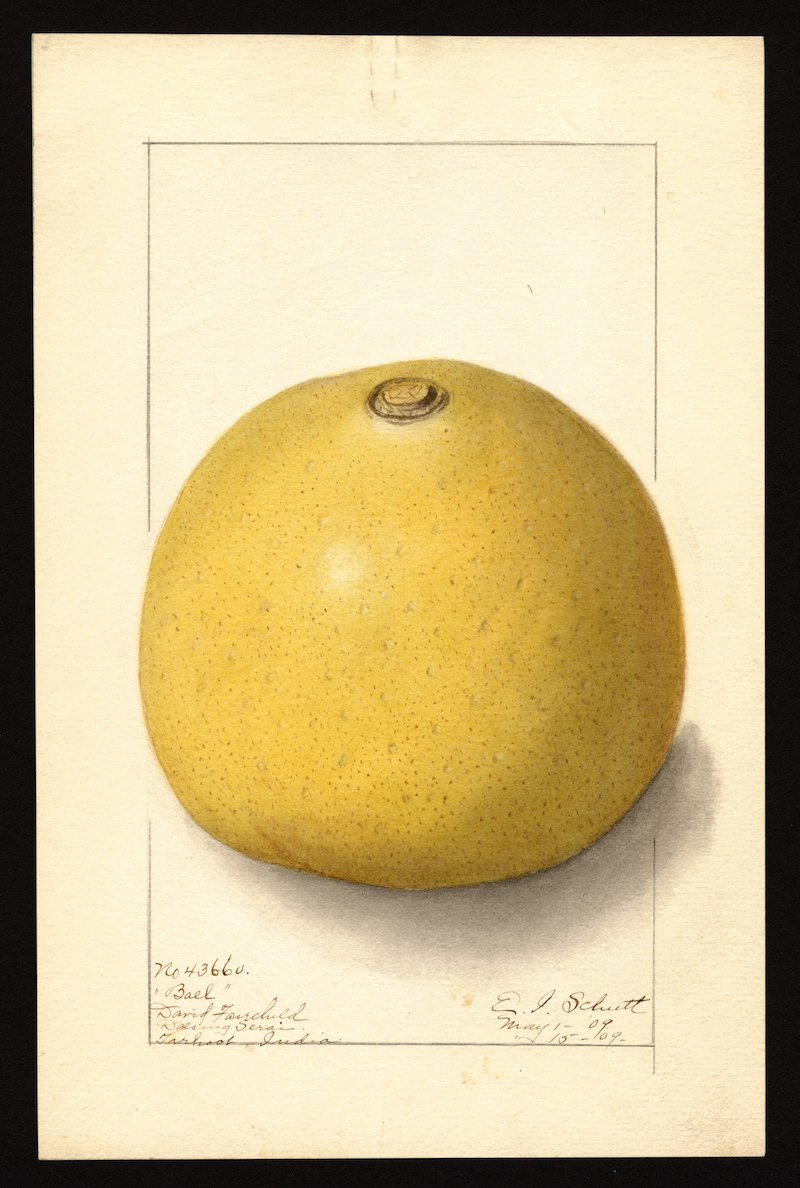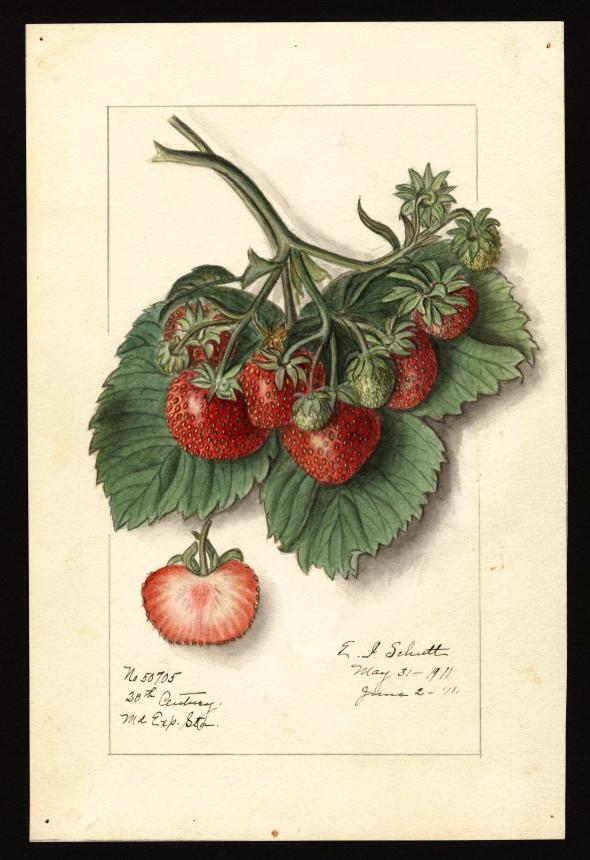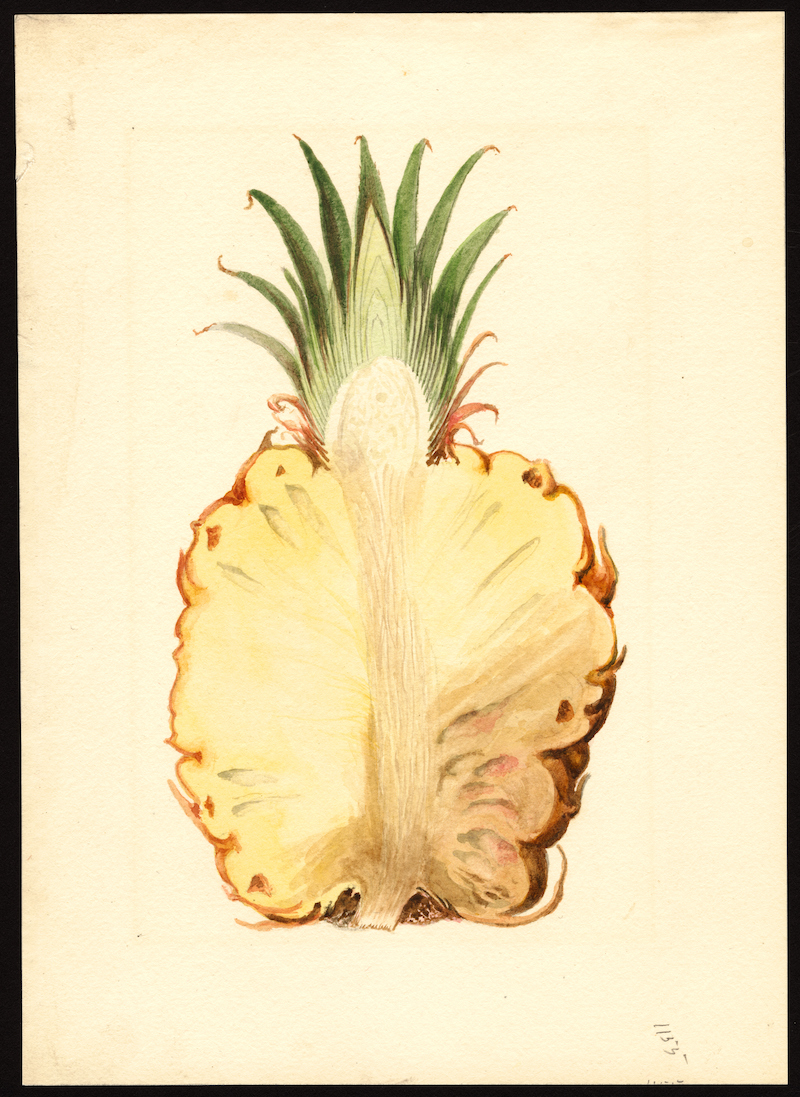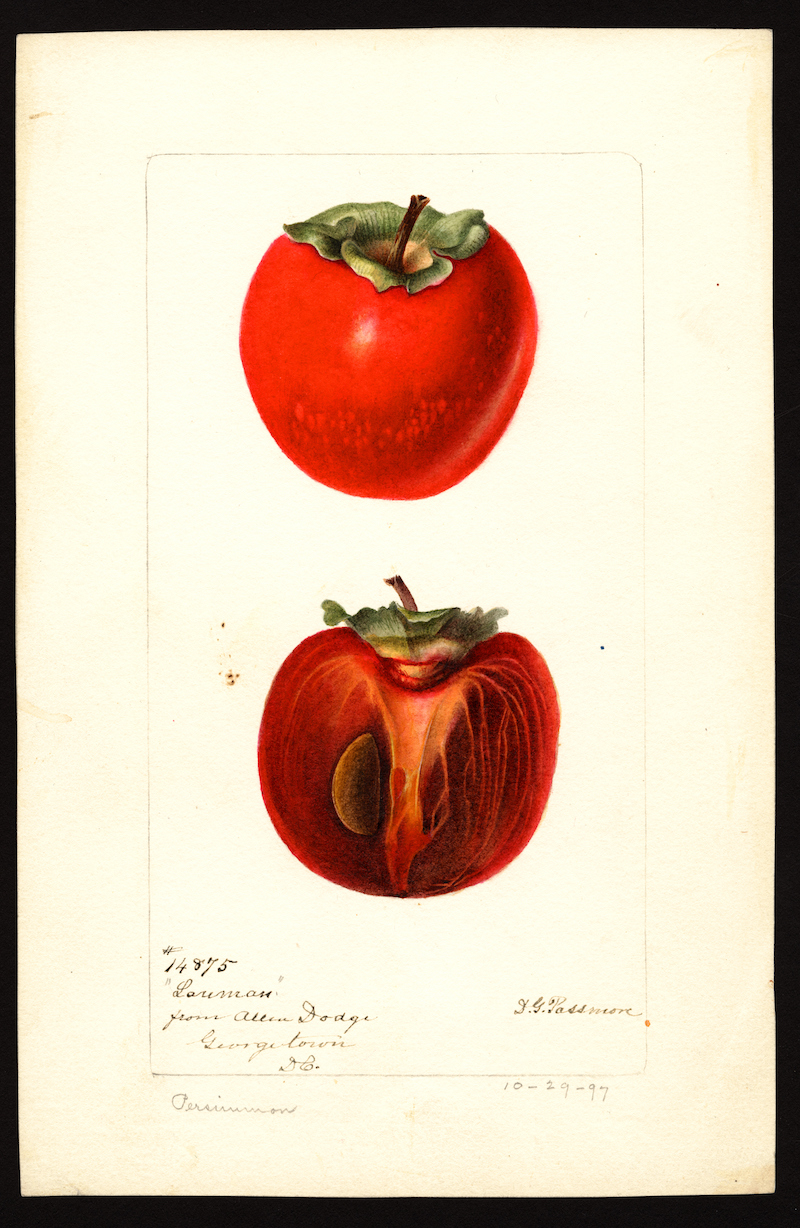
T.S. Eliot asks in the opening stanzas of his Choruses from the Rock, “where is the knowledge we have lost in information?” The passage has been called a pointed question for our time, in which we seem to have lost the ability to learn, to make meaningful connections and contextualize events. They fly by us at superhuman speeds; credible sources are buried between spurious links. Truth and falsehood blur beyond distinction.
But there is another feature of the 21st century too-often unremarked upon, one only made possible by the rapid spread of information technology. Vast digital archives of primary sources open up to ordinary users, archives once only available to historians, promising the possibility, at least, of a far more egalitarian spread of both information and knowledge.
Those archives include the USDA Pomological Watercolor Collection, “over 7,500 paintings, drawings, and wax models commissioned by the USDA between 1886 and 1942,” notes Chloe Olewitz at Morsel. The word “pomology,” “the science and practice of growing fruit,” first appeared in 1818, and the degree to which people depended on fruit trees and fruit stores made it a distinctively popular science, as was so much agriculture at the time.

But pomology was growing from a domestic science into an industrial one, adopted by “farmers across the United States,” writes Olewitz, who “worked with the USDA to set up orchards to serve emerging markets” as “the country’s most prolific fruit-producing regions began to take shape.” Central to the government agency’s growing pomological agenda was the recording of all the various types of fruit being cultivated, hybridized, inspected, and sold from both inside the U.S. and all over the world.
Prior to and even long after photography could do the job, that meant employing the talents of around 65 American artists to “document the thousands and thousands of varieties of heirloom and experimental fruit cultivars sprouting up nationwide.” The USDA made the full collection public after Electronic Frontier Foundation activist Parker Higgins submitted a Freedom of Information Act request in 2015.

Higgins saw the project as an example of “the way free speech issues intersect with questions of copyright and public domain,” as he put it. Historical government-issued fruit watercolors might not seem like the obvious place to start, but they’re as good a place as any. He stumbled on the collection while either randomly collecting information or acquiring knowledge, depending on how you look at it, “challenging himself to discover one new cool public domain thing every day for a month.”

It turned out that access to the USDA images was limited, “with high resolution versions hidden behind a largely untouched paywall.” After investing $300,000, they had made $600 in fees in five years, a losing proposition that would better serve the public, the scholarly community, and those working in-between if it became freely available.
You can explore the entirety of this tantalizing collection of fruit watercolors, ranging in quality from the workmanlike to the near sublime, and from unsung artists like James Marion Shull, who sketched the Cuban pineapple above, Ellen Isham Schutt, who brings us the Aegle marmelos, commonly called “bael” in India, further up, and Deborah Griscom Passmore, whose 1899 Malus domesticus, at the top, describes a U.S. pomological archetype.

It’s easy to see how Higgins could become engrossed in this collection. Its utilitarian purpose belies its simple beauty, and with 3,800 images of apples alone, one could get lost taking in the visual nuances—according to some very prolific naturalist artists—of just one fruit alone. Higgins, of course, created a Twitter bot to send out random images from the archive, an interesting distraction and also, for people inclined to seek it out, a lure to the full USDA Pomological Watercolor Collection.
At what point does an exploration of these images tip from information into knowledge? It’s hard to say, but it’s unlikely we would pursue either one if that pursuit didn’t also include its share of pleasure. Enter the USDA’s Pomological Watercolor Collection here to new and download over 7,500 high-resolution digital images like those above.
via Morsel.
Related Content:
Two Million Wondrous Nature Illustrations Put Online by The Biodiversity Heritage Library
Josh Jones is a writer and musician based in Durham, NC. Follow him at @jdmagness


Beautiful! Lovely!!
I’ve put some of them into book form for my wife. It’s available here. http://www.lulu.com/shop/s‑kim-ebert/pomological-watercolor-paintings/paperback/product-23975681.html
That was quite creative to put free information into book form. In the spirit of generosity as these free image are, why don’t you put them into and ebook and share for free, rather than making money off the backs of artist wutg whom you do not have copyright.
Thank you for bringing to light what the taxpayers “paid for” and allowing all to enjoy!
Just go here: https://usdawatercolors.nal.usda.gov/pom/search.xhtml?start=0
Hi Veda,
First off, it is free for anyone to use as long as you attribute the source. “Use of the images in the U.S. Department of Agriculture Pomological Watercolor Collection is not restricted, but a statement of attribution is required.” I imagine this is done because we the tax payers have already paid the artists.
Putting together the book wasn’t a free prospect. It took quite a bit of effort to download, arrange, clean up the images and find a distributor. Another good example of this work is this wonderful book of Southern Apples, although, it looks like there is some additional content about apples there than what I provide in my book. https://www.amazon.com/Old-Southern-Apples-Comprehensive-Description/dp/1603582940/ref=sr_1_1?keywords=9781603583121&linkCode=qs&qid=1561957328&s=books&sr=1–1
I really just put the book together for my wife, so I doubt with the hours I’ve put into this project I’ve actually made any money.
If you would like your own PDF version, send me an email at ki*@*********go.work, and maybe a tip, and I’ll send you a copy.
Thanks for your thoughts.
Kim
Wow! Nice work. I don’t don’t have time to roll through all those paintings looking for just the right ones but you did that for us.
Since government documents like these images are essentially copyright free, compilation was a great idea. Kudos.
Someday, one of the complainers might take the time you did, download the entire collection, and turn it into a free ebook. But I’ve done ebooks and they are NOT easy. And a picture book of 7500 image size? Nearly impossible. I once had to print a mere 650 page photo book and at fifty cents a page… well, I’m pretty sure you’ve already done the math.
Excellent work! I hope sales are enough to pay you back for your time, energy, and dedication.
Peace! favor ?? can i also pls obtain a copy of the said PDF file of watercolor collection . thank you so much GOD BLESS !!
Thank you for posting the direct link!
None of the hyperlinks work! All lead to an error message saying “Bad Gateway 507”. :((((
Absolutely beautiful! Thank you for sharing!
The title is misleading, this definitely does not cover all worldwide known fruits in 1886. This statement also only appears in the title, I have not found any such statement on the USDA homepage. It would be good if the author either links the source of that claim, or makes the title more factually correct.
Does this include any paintings by Jennie McDowell Lange. She was my great aunt and painted fruits and vegetables.I have a few of her paintings. Thank you.
What is funny is that Amazon and Google Books does this sort of thing all of the time. Taking public domain books, republishing them in a prettier cover, etc., and making profits from them, yet I don’t see anyone complaining about that. I find it ridiculous in this country how people so readily look the other way when a corporation finds clever ways to rape the public; screw with peoples sense of priorities with sophisticated marketing; and play the “friend” who has your back, when all they care about is psyphoning dollars from your pocket. I never thought I would live to see the day when people would defend a company as if it was something worth defending. Defend something worth defending… not a damn corporation.
The links in this 2019 article are dead.
But you can still view the collection at the URL. (delete the spaces after “https:”; Open Culture’s setup thinks it’s spam if it’s a full link):
https: //search.nal.usda.gov/discovery/collectionDiscovery?vid=01NAL_INST:MAIN&collectionId=81279629860007426